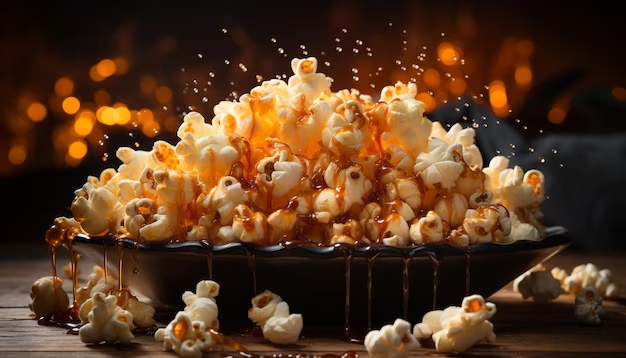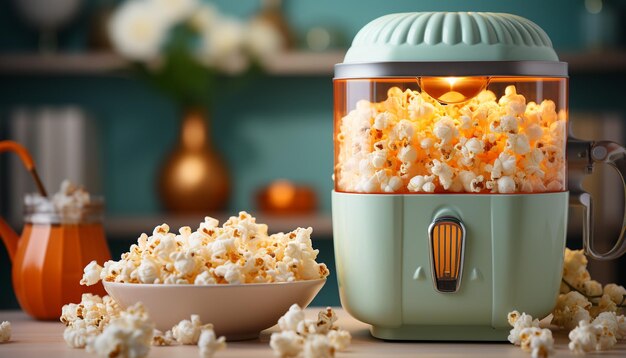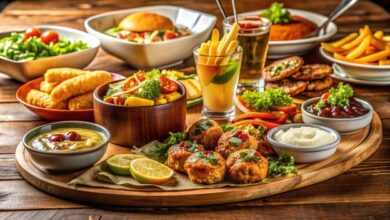Popcorn Popping: A Step-by-Step Guide

Popcorn Popping is a popular snack, especially whilst it is popped inside the microwave. But have you ever puzzled approximately the technology in the back of that pleasant pop? Specifically, is the technique of popcorn popping in a microwave oven endothermic or exothermic? Understanding this could give us insight into the physics and chemistry behind everyday cooking techniques. Let’s damage it down!
The Science of Popcorn
What Makes Popcorn Pop?
Popcorn Popping kernels contain a small amount of moisture internal. When heated, this moisture turns into steam. The steam builds up strain in the kernel till it subsequently reasons the kernel to burst open, turning interior out. This is what creates the fluffy popcorn all of us enjoy.
The Role of Moisture and Heat
The key to popping popcorn lies within the moisture content of the kernels and the warmth carried out. The warmness causes the moisture to vaporize, growing steam. The steam stress is important for the popping effect.
Endothermic vs. Exothermic Processes
Definition and Examples of Endothermic Processes
Endothermic tactics take in warmness from their surroundings. Examples encompass photosynthesis in flora and the melting of ice. In these procedures, the system takes in warmth, main to a decrease in temperature of the surroundings.

Definition and Examples of Exothermic Processes
Exothermic strategies, however, release warmth into their environment. Combustion and breathing are traditional examples. These tactics boom the temperature of the environment as they launch energy.
Microwave Heating: How It Works
Basics of Microwave Heating
Microwaves warmness food using electromagnetic waves. These waves purpose water molecules inside the food to vibrate hastily, producing heat via friction. This warmness is then transferred during the meals.
Energy Absorption inside the Microwave Oven
In a microwave oven, the power absorbed by way of the meals outcomes inside the heating of water molecules. This technique is green and brief, which is why microwaving is a famous approach for popping popcorn.
Popcorn Popping: Analyzing the Process
Heating the Kernels
As the microwave heats the popcorn kernels, the moisture internal them starts offevolved to turn into steam. This manner involves soaking up warmness, indicating an endothermic response in the kernel.
The Pop: Is It Absorbing or Releasing Energy?
When the kernel pops, it releases a burst of steam and warmth. The method of popping includes a transition in which the kernel absorbs warmth to build pressure but releases energy when it explodes. This release of electricity is an exothermic part of the method.

The Role of Moisture in Popcorn
How Moisture Contributes to Popping
The moisture inside the kernel is crucial for the popping process. As the kernel heats up, the moisture becomes steam, which builds up stress till the kernel bursts.
Energy Transformation During Popping
The preliminary heating segment (before popping) is endothermic, because the kernel absorbs warmth. However, the real popping is an exothermic reaction since it releases strength.
Is Popcorn Popping Endothermic or Exothermic?
Detailed Analysis of Energy Changes
Overall, the technique of popping popcorn includes both endothermic and exothermic phases. The kernel absorbs heat to accumulate steam stress, that’s endothermic. When the kernel pops and releases steam and warmth, it will become exothermic.
Comparisons with Other Heating Methods
Microwave popcorn is similar to different methods like stovetop popping in terms of power transformation. However, the efficiency and speed of microwave heating make it a popular preference.
Implications for Cooking
How Understanding These Processes Can Affect Cooking Techniques
Knowing the energy dynamics of popcorn can help in refining cooking strategies. For instance, know-how the role of moisture and warmth can useful resource in reaching the proper pop.
Practical Tips for Perfect Popcorn
Ensure kernels are evenly heated and don’t overcook to save you burning. Using a microwave-secure container with a lid also can enhance popping outcomes.
Conclusion
popcorn popping in a microwave oven involves each endothermic and exothermic techniques. The initial heating phase absorbs warmth (endothermic), even as the real popping releases power (exothermic). This interplay of energy modifications is what makes popcorn a charming example of physics in everyday life.
FAQs
What causes popcorn to pop?
Popcorn pops due to the moisture within the kernel becoming steam and constructing up pressure till the kernel bursts open.
Can you pop popcorn without a microwave?
Yes, popcorn can be popped at the stovetop or in an air popper. Each approach includes heating the kernels till they burst.
Why is popcorn better in the microwave than on the range?
Microwaves provide a more even and faster heating technique, that may result in better popping effects and much less burnt popcorn.
How does moisture affect popcorn?
Moisture in the popcorn kernel is important for popping. It turns into steam, which creates the strain had to pop the kernel.
Are there different endothermic or exothermic reactions in cooking?
Yes, many cooking procedures contain those reactions, which includes boiling (endothermic) and combustion of gas (exothermic).
